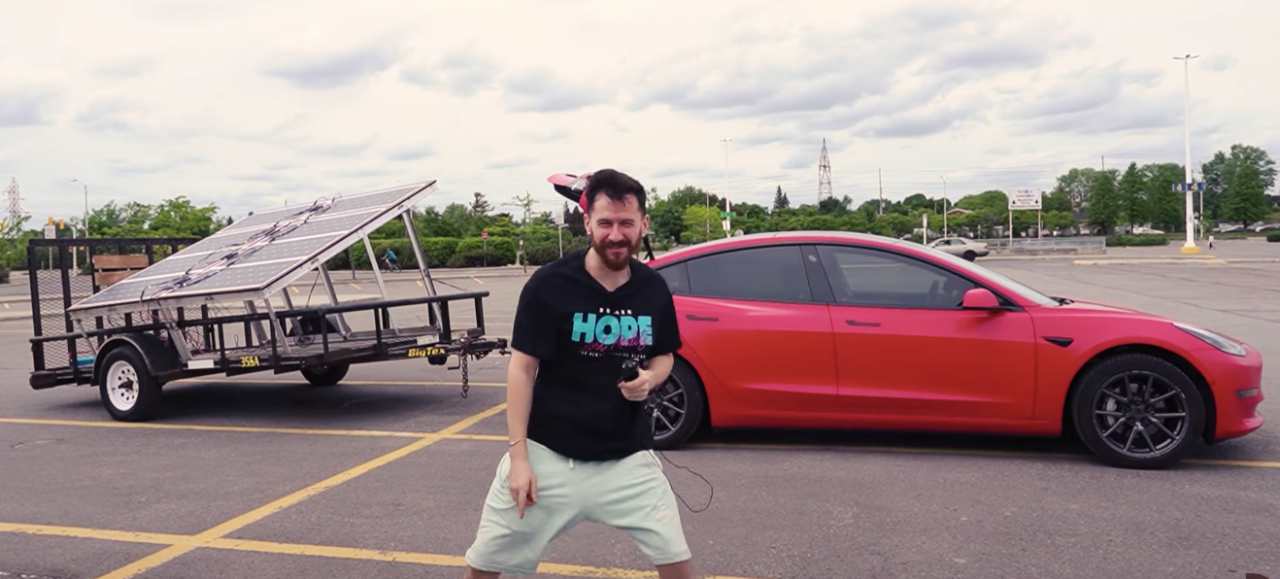The dream of an electric car equipped with solar panels is a challenge that several manufacturers have been pursuing for years. Being able to recharge yourself is undoubtedly an exciting goal. But the reality is that the efficiency of the panels, and the placement on the vehicle body, make this more of a dream than a short-term reality. But some users are trying something different to see if they can solve this challenge with a trailer.
This is the case of a Tesla Model 3 owner who has acquired a series of photovoltaic panels that he has placed on a trailer. These are connected to a battery that, in its view, sends the energy to an inverter that is in charge of injecting the electricity into the car.
For this, it has acquired 8 flexible 100/120 W solar panels, which in itself does not seem like the best choice since although the destination is to recharge a car, they will be installed on a trailer. So you could have opted for panels with something more powerful, with models on the market already exceeding 350 or 400W per unit.
The investment, including the trailer, has been $2,500, and he hopes to achieve the first portable and home system to recharge a Model 3.
But in this case, again, reality collides with dreams. The theoretical maximum power of these panels is 800W, an already low figure that would mean scratching a few kilometers of autonomy every day. And that without counting the one that we will lose if we have to drag the trailer.
As we say, it is the maximum power if all the panels have an optimal orientation and in the central hours of the day. In the best of cases, the reality is achieving a power of 300W, with which, according to the protagonist, it would take 100 hours to complete a charge of his vehicle or 10 days. It is a somewhat strange calculation since it assumes that in those 10 days, there will be complete solar radiation for 10 hours a day when the facilities achieve maximum power only in the central hours. So we are talking about a much longer term.
A project that brings us back to earth and shows us that solar energy and electric cars have a great relationship and a huge future. However, applying this to the body of a vehicle has excellent limitations as long as technology does not evolve. Even using solutions like a trailer is also not a viable alternative in the economic aspect.
Of course, this initiative has a lot of room for improvement, for example, with more efficient panels. But it is an enormous expense that would allow a user to place a 3 or 4 kW installation in their home, and manage to get the most out of it instead of wasting it on a trailer.
The conclusion is that we all want electric and solar cars, and the first models will arrive soon. Still, at the same time, we must be aware of technology’s limitations, and we should not expect miracles that are unattainable for now.

